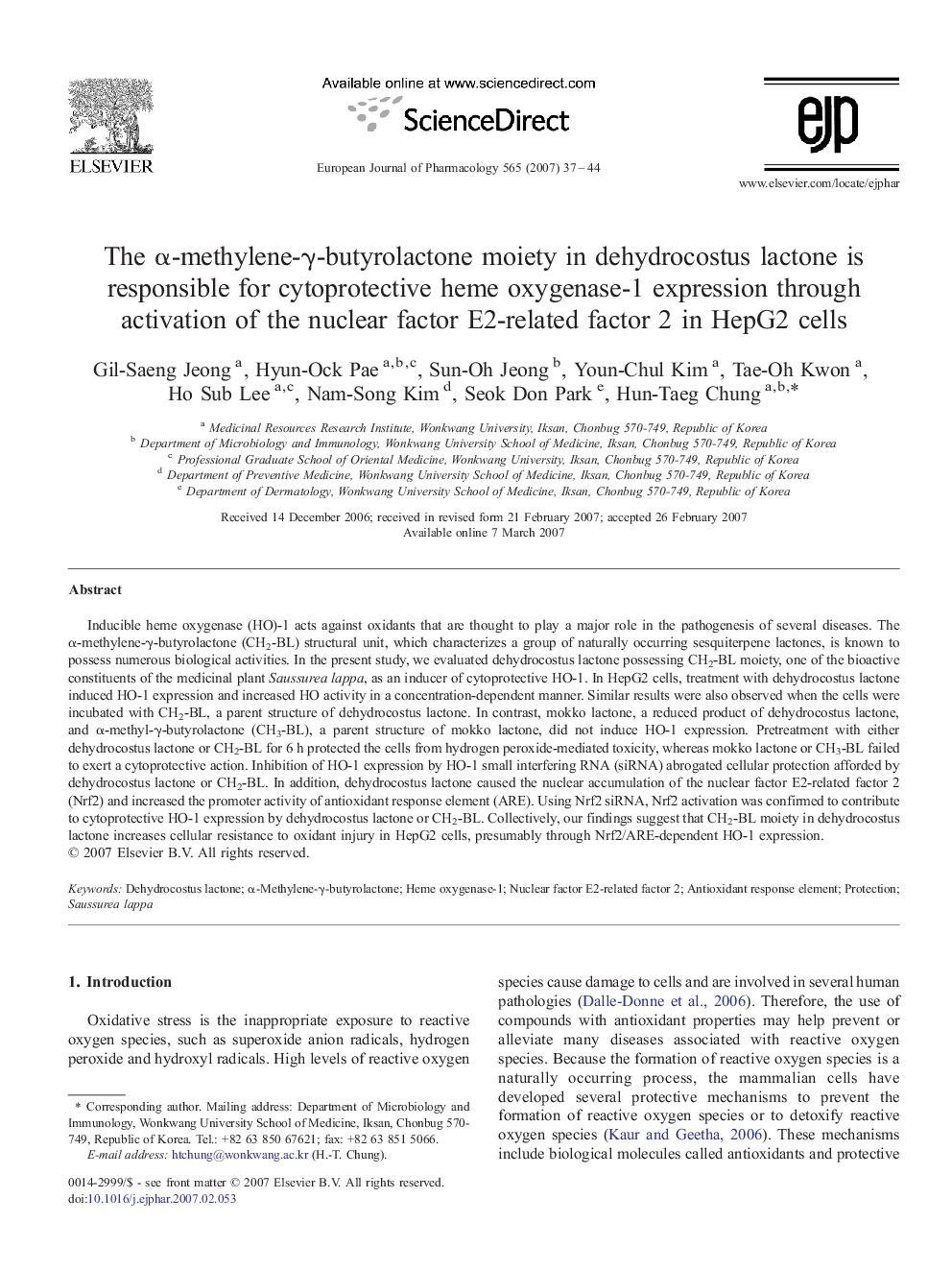| Article ID | Journal | Published Year | Pages | File Type |
|---|---|---|---|---|
| 2536180 | European Journal of Pharmacology | 2007 | 8 Pages |
Inducible heme oxygenase (HO)-1 acts against oxidants that are thought to play a major role in the pathogenesis of several diseases. The α-methylene-γ-butyrolactone (CH2-BL) structural unit, which characterizes a group of naturally occurring sesquiterpene lactones, is known to possess numerous biological activities. In the present study, we evaluated dehydrocostus lactone possessing CH2-BL moiety, one of the bioactive constituents of the medicinal plant Saussurea lappa, as an inducer of cytoprotective HO-1. In HepG2 cells, treatment with dehydrocostus lactone induced HO-1 expression and increased HO activity in a concentration-dependent manner. Similar results were also observed when the cells were incubated with CH2-BL, a parent structure of dehydrocostus lactone. In contrast, mokko lactone, a reduced product of dehydrocostus lactone, and α-methyl-γ-butyrolactone (CH3-BL), a parent structure of mokko lactone, did not induce HO-1 expression. Pretreatment with either dehydrocostus lactone or CH2-BL for 6 h protected the cells from hydrogen peroxide-mediated toxicity, whereas mokko lactone or CH3-BL failed to exert a cytoprotective action. Inhibition of HO-1 expression by HO-1 small interfering RNA (siRNA) abrogated cellular protection afforded by dehydrocostus lactone or CH2-BL. In addition, dehydrocostus lactone caused the nuclear accumulation of the nuclear factor E2-related factor 2 (Nrf2) and increased the promoter activity of antioxidant response element (ARE). Using Nrf2 siRNA, Nrf2 activation was confirmed to contribute to cytoprotective HO-1 expression by dehydrocostus lactone or CH2-BL. Collectively, our findings suggest that CH2-BL moiety in dehydrocostus lactone increases cellular resistance to oxidant injury in HepG2 cells, presumably through Nrf2/ARE-dependent HO-1 expression.
